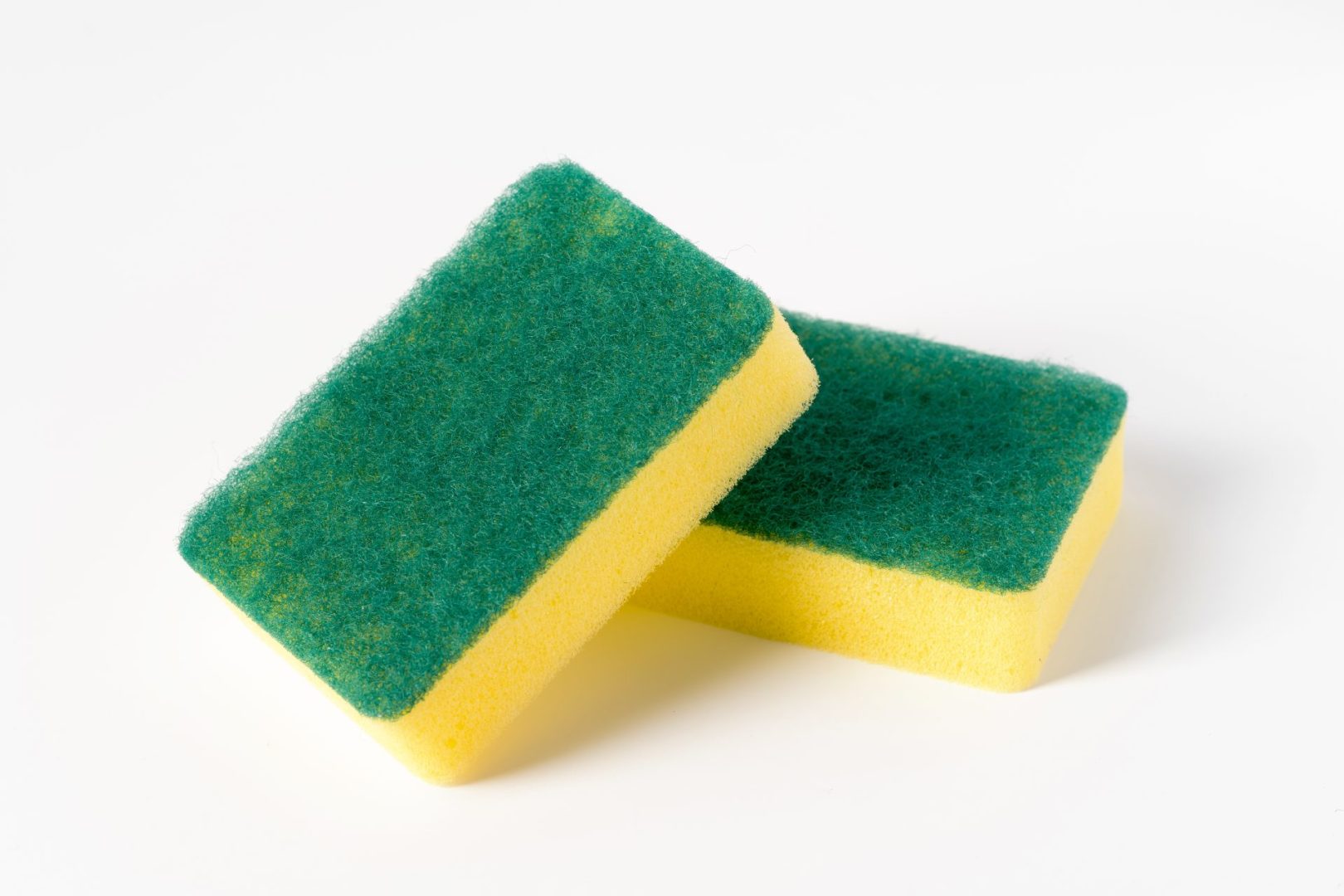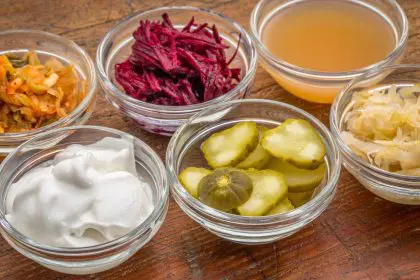The kitchen sponge represents one of the most humble yet ubiquitous tools in modern homes. Used daily for washing dishes, wiping counters, and general cleaning, these porous cleaning aids rarely receive much thought beyond occasional replacement. Yet growing evidence suggests these seemingly innocent household items may pose surprising risks to gut health through multiple pathways that have remained largely unexamined. Understanding the connection between kitchen sponges and gut microbiome disruption reveals important considerations for protecting digestive health while maintaining kitchen cleanliness.
The bacterial reservoir effect
Kitchen sponges create ideal environments for microbial growth through their combination of moisture retention, nutrient availability, and extensive surface area. The porous structure provides countless microscopic spaces where bacteria can proliferate, protected from drying and cleaning attempts. A single used kitchen sponge typically harbors billions of bacteria across hundreds of different species, creating one of the densest bacterial populations found in the modern home.
While most media attention focuses on potential pathogenic bacteria in sponges, the more significant gut health concern involves the broader bacterial ecosystem these tools harbor. Kitchen sponges consistently develop high concentrations of certain bacterial families not typically abundant in the natural environment. These bacteria-dense objects then spread their microbial populations across food preparation surfaces, eating utensils, and dishware, creating repeated exposure opportunities during meals.
The bacterial transfer from sponges to food and eating surfaces creates unintended “microbial seeding” that differs substantially from the beneficial bacterial exposures humans evolved alongside. Rather than encountering diverse environmental microbes that support microbial balance, this sponge-driven exposure skews toward species adapted to detergent resistance and rapid reproduction in artificial environments. These exposure patterns may contribute to subtle but meaningful shifts in gut microbiome composition over time.
Antimicrobial residue accumulation
The chemicals used to clean kitchen sponges or incorporated into “antibacterial” sponge varieties create another potential pathway for gut microbiome disruption. Many commercial dishwashing liquids contain antimicrobial compounds that accumulate within sponge material over time. These substances subsequently transfer to dishes and food preparation surfaces in small but consistent amounts with each use.
Triclosan and related compounds, though less common than in previous decades, still appear in some dishwashing products and antibacterial sponge formulations. These broad-spectrum antimicrobial agents have demonstrated effects on gut microbial composition in various research models, with particular impact on beneficial bacterial groups like Lactobacillus and Bifidobacterium that play key roles in gut barrier maintenance and immune regulation.
Quaternary ammonium compounds (QACs or “quats”) represent another common antimicrobial class in cleaning products that readily absorb into sponge material and resist rinsing. These compounds demonstrate particular stability on surfaces after application, creating potential for long-term low-level dietary exposure. Research indicates certain QACs may alter gut microbiome diversity and metabolic functions even at concentrations below regulatory thresholds.
Even conventional dish soaps without added antimicrobials contain surfactants that, while not marketed as antibacterial, nevertheless disrupt bacterial cell membranes and alter microbial populations. These surfactants can remain in sponges after rinsing and subsequently transfer to eating surfaces. Their effects appear more selective than broad-spectrum antimicrobials but may still influence sensitive beneficial bacterial populations in the gut when ingested regularly in small amounts.
Microplastic shedding into food environments
Most kitchen sponges contain synthetic materials—typically polyurethane, polyester, or nylon—that gradually break down during use. This degradation process releases microplastic particles that transfer to dishes, silverware, and food preparation surfaces. As sponges age and deteriorate, this shedding process accelerates, creating increased microplastic transfer to food-adjacent environments.
These microplastics range from visible fragments to microscopic particles and fibers that easily escape notice during routine cleaning. Once transferred to food or eating surfaces, they create a direct pathway for ingestion. Emerging research indicates that ingested microplastics interact with gut microbiome composition through several mechanisms, including physical disruption of microbial biofilms, absorption of beneficial bacterial metabolites, and leaching of chemical additives that influence bacterial growth patterns.
The plastic additives within these particles—including phthalates, bisphenols, and stabilizers—may exert particular influence on gut bacterial communities. Many of these compounds demonstrate antimicrobial properties or endocrine-disrupting effects that indirectly alter gut environment conditions. The gradual accumulation of these substances through regular low-level exposure represents a distinct mechanism by which sponge-derived materials might influence gut health over time.
The microplastic concern extends beyond the primary sponge component to include the abrasive scrubbing layers attached to many kitchen sponges. These often contain denser plastic materials that generate different microplastic profiles during breakdown. The combination of multiple synthetic materials in single cleaning tools creates complex degradation patterns that may influence the gut environment through varied pathways simultaneously.
Cross-contamination of fermented and probiotic foods
Kitchen sponges pose particular concerns for households consuming fermented foods, probiotic-rich items, or those engaged in home fermentation practices. The bacterial populations harbored in heavily used sponges can directly compromise these beneficial food sources through cross-contamination during preparation or cleanup processes.
When used to clean surfaces or containers involved with fermented foods, the competing bacterial populations in sponges may transfer and subsequently interfere with the carefully cultivated beneficial bacterial cultures. This interference can manifest as altered fermentation outcomes, reduced probiotic viability, or even spoilage in sensitive fermented products. The high bacterial load in sponges essentially creates an opposing microbial force working against the beneficial bacteria these foods are meant to provide.
Beyond direct competition, the antimicrobial residues in sponges present another mechanism for disrupting probiotic-rich foods. Even trace amounts of antimicrobial compounds can significantly impact sensitive probiotic bacteria, potentially reducing their viability before consumption. This creates situations where carefully selected probiotic foods or supplements may deliver fewer benefits than expected due to unrecognized sponge-related contamination.
The potential for sponges to serve as vectors transferring phages—viruses that specifically infect bacteria—adds another dimension to this concern. Bacteriophages naturally accumulate in bacteria-rich environments like kitchen sponges and can specifically target and destroy beneficial bacterial strains when transferred to fermented foods. This invisible form of contamination can reduce probiotic potency without creating obvious signs of spoilage or contamination.
Biofilm disruption and barrier permeability
The detergents, antimicrobials, and surfactants that accumulate in kitchen sponges may influence gut health through direct effects on the intestinal environment beyond their impact on bacterial populations. These compounds demonstrate capacity to disrupt the protective mucus layer that lines the intestinal tract and shields gut tissue from direct bacterial contact and potential inflammatory responses.
Surfactants in particular show effects on tight junction proteins that maintain the intestinal barrier’s integrity between cells. Regular ingestion of even small amounts of these compounds through food contamination could potentially contribute to subtle increases in intestinal permeability—sometimes called “leaky gut”—that allows bacterial components and food particles to interact more directly with the immune system behind the gut barrier.
The potential for these barrier-disrupting effects proves particularly relevant given that many individuals may have existing subclinical gut inflammation or barrier function challenges without obvious symptoms. In these cases, the additional stress from surfactant or antimicrobial exposure could potentially exacerbate underlying issues that might otherwise remain manageable through the body’s compensatory mechanisms.
The timing of exposure adds another consideration, as barrier function naturally fluctuates throughout the day and in response to various factors including stress, sleep quality, and meal composition. Exposure to barrier-disrupting compounds during vulnerable periods might produce more significant effects than the same exposure during periods of optimal barrier function, creating complex patterns difficult to identify through conventional research approaches.
Dysbiosis maintenance and reinforcement
For individuals already experiencing gut microbiome imbalances (dysbiosis), kitchen sponge contamination may create a particularly problematic feedback loop that impedes recovery. The altered bacterial exposures, antimicrobial compounds, and barrier-disrupting effects previously discussed can potentially reinforce existing dysbiosis patterns, making dietary and supplement interventions less effective than expected.
This reinforcement mechanism becomes particularly relevant because dysbiosis often creates a state of enhanced vulnerability where the gut ecosystem demonstrates reduced resilience against disrupting influences. The imbalanced microbial community has fewer buffering mechanisms against contaminants or antimicrobial compounds compared to a diverse, healthy microbiome. This creates situations where seemingly minor exposures from sponge-related contamination might produce more significant effects than would occur in individuals with optimal gut health.
The potential for sponge-derived exposure to maintain low-grade intestinal inflammation through microbial and chemical pathways creates particular concerns for recovery from inflammatory gut conditions. Even subtle inflammatory promotion can maintain the environmental conditions that favor opportunistic bacteria over beneficial species, creating a persistent obstacle to reestablishing optimal microbial balance despite otherwise appropriate interventions.
This potential maintenance effect helps explain why some individuals report incomplete resolution of gut symptoms despite extensive dietary modifications, supplement protocols, or medical interventions. The ongoing exposure to disruptive factors from everyday household items represents one potential “missing piece” that continues reinforcing dysbiosis patterns even when more obvious factors have been addressed through conventional approaches.
7 practical solutions to protect your gut health
- Implement a systematic replacement schedule based on sponge usage patterns rather than waiting for obvious deterioration signs. For households with daily dishwashing, replace kitchen sponges weekly to prevent extreme bacterial accumulation and material breakdown. This regular replacement significantly reduces exposure to both degraded materials and established bacterial reservoirs. Consider using dated labels or automated delivery subscriptions to maintain consistent replacement without requiring active remembering, as visual cues often underestimate actual sponge age and contamination levels.
- Explore alternative cleaning tools made from naturally antimicrobial and biodegradable materials that create fewer gut disruption concerns. Compressed cellulose sponges with no synthetic component offer effective cleaning without microplastic shedding. Silicone scrubbers provide excellent durability and cleaning performance while resisting bacterial growth and remaining dishwasher-safe for regular sterilization. Natural fiber dish brushes with wooden handles allow effective cleaning while generating minimal bacterial reservoirs and no microplastic contribution, though they require proper drying between uses.
- Establish dedicated sponge purposes to prevent cross-contamination between different kitchen areas and reduce gut health impacts. Maintain separate cleaning tools for dishes that contact food directly versus tools for general surface cleaning. Use distinct visual indicators—different colors or shapes—to prevent accidental cross-use that might transfer higher bacterial loads or cleaning chemical residues to eating surfaces. This separation strategy creates risk stratification that minimizes exposure to the most concerning contaminants even if complete elimination proves impractical.
- Implement effective decontamination routines between uses to reduce bacterial load without increasing chemical residues. Microwave dampened sponges for 1-2 minutes or run through dishwasher hot cycles with drying phase to achieve significant bacterial reduction without additional chemical exposure. Avoid bleach soaking methods that increase chemical residue concerns while potentially selecting for more resistant bacterial strains over time. Allow complete drying between uses whenever possible, as dehydration naturally reduces bacterial viability without chemical intervention.
- Modify dish cleaning procedures to minimize direct food-surface contamination risks. Pre-rinse dishes before using sponges to remove food particles that both feed bacterial growth and increase cross-contamination potential. Wash glasses and eating utensils first when sponges are cleanest, progressing to cooking implements and finally surfaces contacting raw ingredients. This sequence minimizes transfer of concerning contaminants to the most critical food-contact surfaces. Consider final clean water rinsing after sponge washing to dilute any remaining surfactant or bacterial transfer.
- Create protective barriers for particularly sensitive items in the kitchen ecosystem. Use dedicated cleaning methods without sponge contact for items involved in fermentation projects, probiotic storage, or consumption by individuals with known gut sensitivity. Implement separate cutting boards, preparation areas, and cleaning tools for these high-priority items to maintain their integrity. This targeted protection strategy allows continued conventional cleaning for less sensitive applications while safeguarding the most vulnerable elements of the food preparation environment.
- Consider supplemental protective approaches that support gut resilience against unavoidable exposures. Maintain optimal hydration to support natural detoxification processes and mucus layer integrity in the gut. Emphasize dietary fiber diversity to support beneficial bacterial populations that may help counterbalance unintended exposures. For individuals with established gut sensitivity, targeted prebiotic and probiotic strategies implemented with appropriate professional guidance may help maintain resilience against household contaminant challenges while more comprehensive solutions are established.
Balancing concerns with practical reality
While understanding these potential mechanisms for gut disruption proves valuable, maintaining perspective remains equally important. Kitchen cleanliness itself provides significant health benefits by reducing foodborne illness risks and preventing acute infections that could damage gut health more severely than the subtle effects discussed. The goal involves optimizing cleaning approaches rather than abandoning effective kitchen hygiene.
Individual factors significantly influence vulnerability to these potential effects. People with existing inflammatory gut conditions, compromised barrier function, or established dysbiosis likely face greater risks from sponge-related exposures compared to those with robust gut health and optimal microbial diversity. This variation suggests prioritizing alternative approaches particularly for vulnerable individuals while recognizing that others may experience minimal impacts from conventional practices.
The cumulative nature of these exposures warrants consideration as well. While a single meal prepared with modest sponge-related contamination likely produces minimal effects, the consistent daily exposure over months and years creates potential for more meaningful impact through accumulated changes in gut bacterial populations and barrier function. This long-term perspective helps explain why seemingly minor exposures merit attention in comprehensive gut health protocols.
Perhaps most importantly, addressing sponge-related concerns represents just one component within broader efforts to support optimal gut health. Dietary quality, stress management, sleep optimization, and appropriate physical activity all create substantially larger influences on gut function for most individuals. Sponge considerations therefore should be viewed as complementary fine-tuning rather than primary interventions within comprehensive gut health approaches.
With appropriate perspective and practical strategies, households can significantly reduce potential negative impacts from kitchen sponges without creating undue stress or impractical cleaning regimens. By understanding these hidden connections between common household items and gut health, individuals gain valuable opportunities to make informed choices that support long-term wellbeing through seemingly small but meaningful adjustments to everyday practices.















